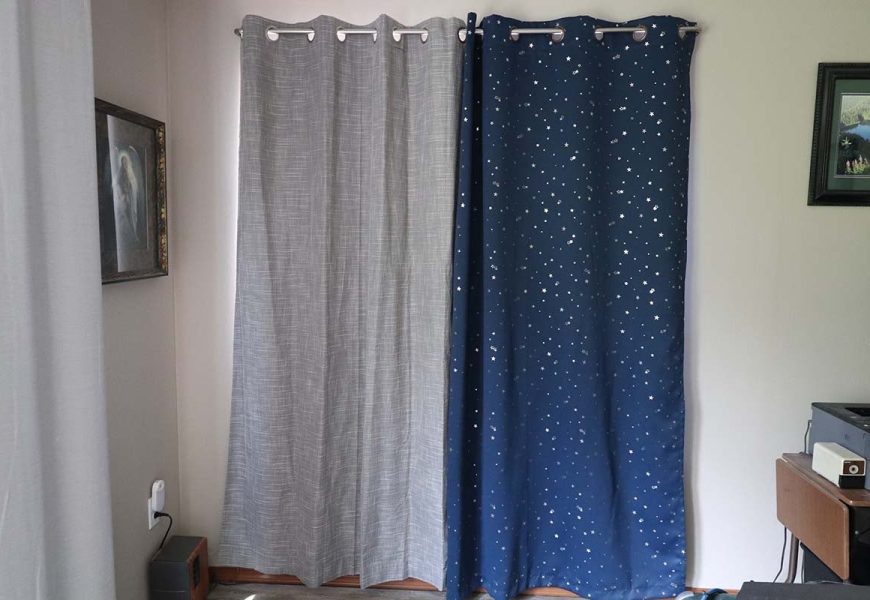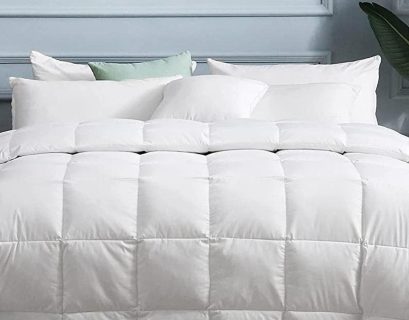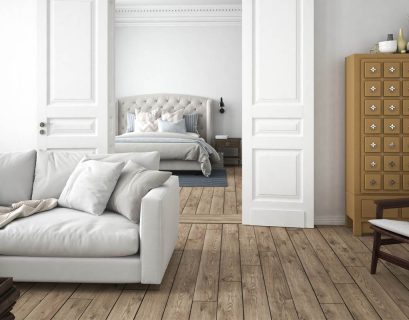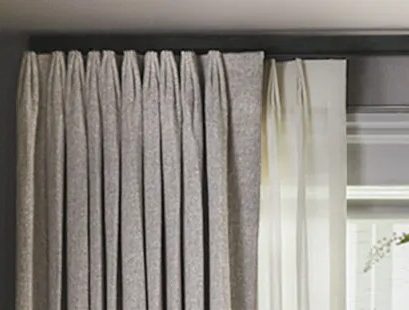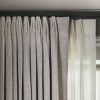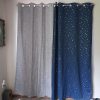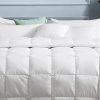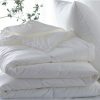As homeowners increasingly seek sustainable and energy-efficient solutions, window treatments play a pivotal role in regulating indoor temperatures and reducing energy consumption. Curtains, beyond their decorative function, can act as effective insulators, contributing to both warmth in winter and coolness in summer. In this comprehensive guide, we will explore the world of energy-efficient curtain options designed to enhance temperature control, providing a comfortable and eco-friendly living environment.
Understanding Energy-Efficient Curtains:
Energy-efficient curtains are specially designed to minimize heat transfer through windows, offering insulation against external temperatures. These curtains are constructed from materials that effectively trap heat inside during colder months and block external heat during warmer periods. The primary features of energy-efficient curtains include:
- Thermal Lining:
- Energy-efficient curtains often come with a thermal lining, a layer of material designed to enhance insulation. This lining helps regulate indoor temperatures by preventing the transfer of heat through windows.
- Multiple Layers:
- Some curtains incorporate multiple layers of fabric, with each layer serving a specific purpose. The combination of insulating materials can provide effective temperature control year-round.
- Reflective Coatings:
- Certain energy-efficient curtains feature reflective coatings on the outer layer. These coatings reflect sunlight and prevent excess heat from entering the room, especially during hot summer days.
- Tight Weave Fabrics:
- Curtains with tight weave fabrics, such as densely woven cotton or polyester, are effective in blocking drafts and minimizing heat loss during colder months.
- Customization for Climate:
- Energy-efficient curtains are often customizable to suit different climates. Some are specifically designed for cold climates, providing maximum insulation, while others focus on reflecting sunlight in warmer regions.
Types of Energy-Efficient Curtains:
- Thermal Curtains:
- Thermal curtains, as the name suggests, are designed for optimal thermal insulation. These curtains typically feature a three-layer construction: a decorative front layer, an insulating middle layer, and a reflective backing. They are effective in maintaining a comfortable indoor temperature in both summer and winter.
- Blackout Curtains:
- While blackout curtains are known for their light-blocking properties, they also contribute to temperature control. The dense fabric not only blocks light but also provides insulation, making them suitable for bedrooms and areas where privacy and temperature regulation are priorities.
- Insulated Cellular Shades:
- Cellular or honeycomb shades consist of pockets that trap air, creating a barrier against heat transfer. These shades are highly effective in insulating windows and come in various opacities, allowing for light control alongside temperature regulation.
- Reflective Curtains:
- Curtains with reflective coatings on the outer layer are designed to reflect a significant portion of sunlight. This helps prevent excessive heat from entering the room, making them ideal for climates with intense sunlight and high temperatures.
- Thermal Roman Shades:
- Roman shades with thermal lining offer a blend of style and energy efficiency. The fabric folds create additional insulation, and the thermal lining enhances their temperature-regulating properties.
Benefits of Energy-Efficient Curtains:
- Reduced Energy Bills:
- By effectively insulating your windows, energy-efficient curtains can reduce the need for heating in winter and cooling in summer. This translates to lower energy consumption and cost savings on your utility bills.
- Year-Round Comfort:
- Energy-efficient curtains provide a consistent indoor temperature throughout the year. They keep the warmth inside during winter and prevent excess heat from entering during summer, ensuring year-round comfort.
- UV Protection:
- Curtains with reflective coatings not only regulate temperature but also offer UV protection. Blocking harmful UV rays helps prevent fading of furniture, flooring, and other interior elements.
- Environmental Impact:
- By minimizing the reliance on heating and cooling systems, energy-efficient curtains contribute to a lower carbon footprint. This eco-friendly approach aligns with sustainable living practices.
- Improved Sleep Quality:
- Blackout curtains, a type of energy-efficient curtain, are known for their ability to block external light. This feature enhances sleep quality by creating a dark and conducive sleep environment.
Tips for Maximizing the Effectiveness of Energy-Efficient Curtains:
- Ensure Proper Installation:
- Proper installation is crucial for the effectiveness of energy-efficient curtains. Ensure that curtains extend beyond the window frame and reach the floor to minimize drafts and maximize insulation.
- Seal Gaps and Drafts:
- Seal any gaps or drafts around windows to enhance the performance of energy-efficient curtains. Weatherstripping and draft stoppers can be used to seal gaps and prevent heat exchange.
- Layering for Maximum Insulation:
- For enhanced insulation, consider layering energy-efficient curtains with other window treatments like blinds or shades. This combination creates additional barriers against temperature fluctuations.
- Choose the Right Fabric and Color:
- The choice of fabric and color can impact the performance of energy-efficient curtains. Opt for tight weave fabrics and darker colors to absorb more sunlight and enhance insulation.
- Open and Close Strategically:
- Develop a strategy for opening and closing curtains based on the time of day and the season. During colder months, keep curtains closed at night to retain warmth, and during warmer months, close them during peak sunlight hours to block excess heat.
- Regular Cleaning and Maintenance:
- Keep energy-efficient curtains in optimal condition by following the recommended cleaning and maintenance guidelines. Dust and debris can affect their insulating properties, so regular care is essential.
Conclusion:
Energy-efficient curtains are not only a stylish addition to your home decor but also a practical investment in creating a comfortable and sustainable living environment. Whether you opt for thermal curtains, blackout curtains, or reflective options, the benefits extend beyond temperature control to energy savings and environmental consciousness. By embracing energy-efficient curtain options and implementing strategic usage, you can enjoy a cozy and eco-friendly home while making a positive impact on your energy bills and the planet.
